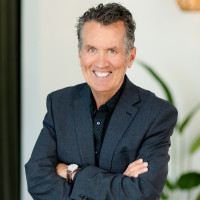The road to natural, day 1: Finding a place for farmers in the nutrition industry

Nutrition Business Journal Editor-in-Chief Rick Polito and aronia berry farmer Andrew Pittz set off on a journey from Boulder, Colorado, to Anaheim, California, visiting farms and interviewing industry leaders and politicians along the way to explore the connection between American agriculture and the dietary supplement and functional food industries. This is part one of five. Read the rest here.
The transition between city and country never comes suddenly. It’s more a game of hopscotch. Agricultural plots are taken out, and housing developments crop up in their place, new sets of homes and cul-de-sacs skipping across pastures and orchards, creating an incongruous patchwork until the horizon opens up again and the farms shift the balance back to green.
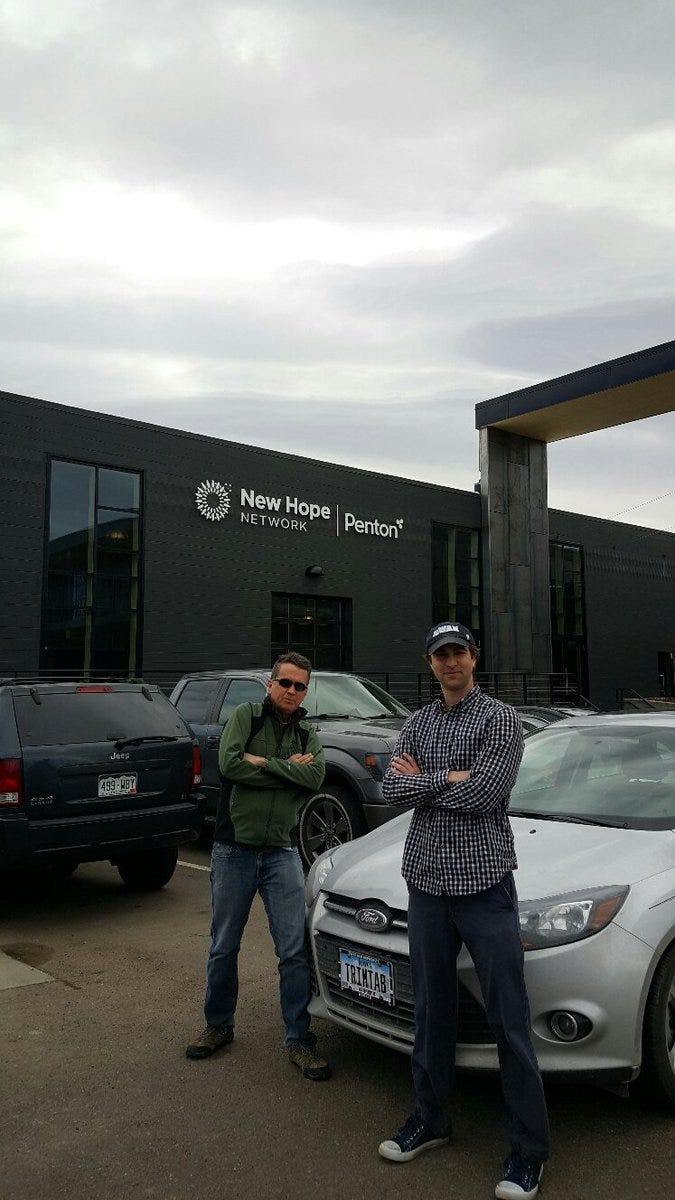
My colleague in this long-miles adventure is Andrew Pittz, an Iowan and an organic aronia berry farmer who wants to strengthen the connection between farms and the health-focused mission of the natural products industry. Andrew sees an urgent mission to support the American farmers who could play a bigger role in the billions of dollars that the industry represents.
The trip will end in Anaheim, but our true destination is every place we stop. We’re not just getting to Expo. We are seeing what’s in between and, hopefully, helping people to see the benefits for both ends of a spectrum that begins on a farm and ends in those many booths. Bringing the supply chain home, to American farms, could mean confidence for not just the consumers but the companies that source ingredients from around the world, especially supplement companies. Bringing the supply chain home could also spur economic development in rural areas so often left behind, if not completely forgotten, as a global economy speeds by them, the way we speed past the cattle, quiet in their pastures.
Andrew is behind the wheel on this morning, the Friday before Expo West, and we leave the New Hope parking lot not entirely sure what we will discover. We have a route. We have a car. We have an iPhone and a dash-cam mount to chronicle our adventure for a video diary. We have contacts with farmers and producers along the way.
And we have only the outlines of an idea for what we might find ahead.
Building an itinerary was more complicated than I’d imagined. We’ve sketched out a route that takes us across Wyoming, Utah and Nevada before turning south into the friendlier growing seasons of California. Early March is most of a year away from harvest season, and more than a few farmers along the more northern stretches have fled to warmer climates.
Our first stop, after arguing about Andrew’s radio choices, is almost obligatory. The supply chain for one ingredient is rather obvious, and it starts and ends, by law, in Colorado. Hemp is a state-sanctioned crop. Cannabis for recreational purposes is regulated and a significant income stream in some rural areas. Elite Botanicals in Berthoud grows in greenhouses and fields on the outer edges of the Denver Metro areas, fewer than 30 miles into our 2,000-mile journey. The company operates a pair of greenhouses, outdoor fields and a lab a few miles away where they make sure the marijuana plants stay in the “industrial hemp” category and don’t blossom into the higher THC content that would make it a drug, recreational but legal in Colorado.
We quickly learn how important that distinction, and the lab, can be.
Standing in the greenhouse, with the constant whir of the fans turned down for our amateur audio, Jason Brooks explains the difference between growing a weed and growing a crop. The lab makes that difference. “We opened the lab so that all these other farmers could have their product processed,” Brooks says. “You can grow as many bales of hemp as you want, but at the end of the season, if you don’t refine it into oil or something else, you’re pretty much stuck with cattle feed.”
The lab allows a relationship between the government and the grower that is productive and downright friendly. Hemp is regulated under the [Colorado] Department of Agriculture, says Trey Bonvillain, Elite Botanical’s director of operations. “It’s actually a very easy and collaborative process. They look at it as a cash crop.”
The relationship between growers in the burgeoning, if for some unconventional, industry is equally friendly. Bonvillain talks about neighboring growers by first name. Brooks puts it simply: “We all started the race at the same time. We all know each other. There’s a lot of love.”
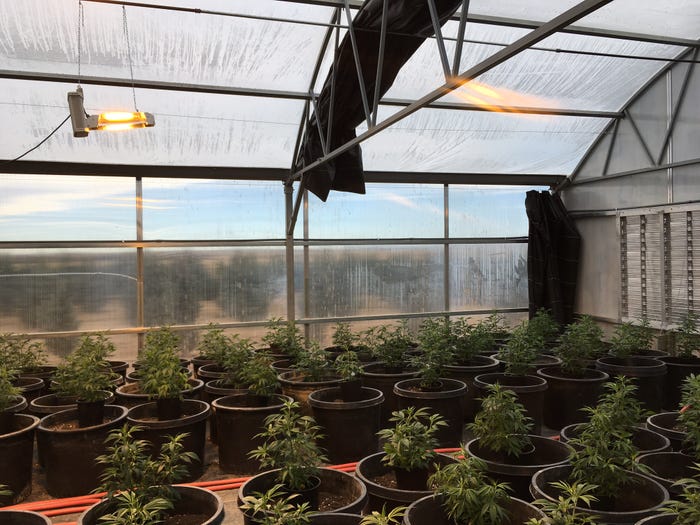
Hemp and recreational cannabis are a growing industry, growing an economy in largely stagnant communities, like Pueblo, 150 miles to the south—American products creating jobs in America. But the industry teeters on the uncertain whims of shifting politics. CBD was not a supplement in the eyes of the FDA even before the Trump administration put Jeff Sessions in the U.S. attorney general’s office. It’s been termed an investigational drug. It’s been called outright illegal. And people still depend on it for epilepsy, anxiety and a variety of conditions.
We will see many threats and obstacles facing the farmers on our journey but none so unique and foreboding as what glares down on a pair of greenhouses in Berthoud.
Back in the car, Andrew has relented on the radio. It’s not all country anymore. The satellite radio station offers something more like a mixtape.
But we don’t have a lot of time for the radio. There are many stretches on our route where farms fade from sparse to non-existent and we scheduled a series of phone interviews to break up the drive and explore the role of the farmer in the natural products industry. On I-25, approaching the Wyoming border, the supply chain is traced far from the freeway lanes. This is ranching country. We see more fireworks stands than farms.
Our first call is Barlean’s Organic Oils owner Bruce Barlean. He believes in our road trip. He believes in our mission. Every farm has a story that begins in the soil, he tells us. “Ask about their holistic processes and not just the end ingredients,” Barlean tells us. “What are they doing to help keep the dirt strong?”
Our next call is Jim Emme at NOW Foods. Emme grew up on a farm. He knew about our trip. He jokes that he’s worried about what trouble we’ll get into, but he thinks we have an important story to tell. Emme grew up on an Indiana farm. He knows the challenges. An alliance with the supplement industry would benefit both farmers and the industry. For his company, a supply chain that began and ended in the U.S. would be “a game changer.” “If the ingredients were domestically sourced, it would be a lot easier to educate the consumer about the safety of the product.”
For smaller farmers attempting to compete in commodity markets, botanicals and other ingredients for supplements just make sense, Emme explains. “They need to be looking for other crops that could really have more of stable economic side to them, and I think our industry is a great opportunity for farmers,” Emme says. It’s a diversification proposition and a partnership. “Farmers need to understand that they can make a good living wage for themselves and their family by supplying natural products. We are a reliable industry. We are part of the supply chain that does have a mission to try and help people.”
Employing farmers helps people who live and work far beyond the gates of the farm. For every economic activity there is a “multiplier effect.” The dollars from one sale translate into jobs and transactions next door, or down the road, as each business requires a variety of goods and services to keep its business running. Agriculture offers a strong multiplier effect in areas that need every boost and advantage they can get. Bringing cultivation back to the U.S., or simply keeping it here, could have profound effects, especially considering the smaller farms that would supply ingredients to the supplement industry.
Smaller farms keep money in the community, building business for their neighbors as the multiplier effect ripples outward.
Leonard Mosher knows that dynamic well.
Mosher is a grain farmer and distributor in Wyoming. He reaches beyond his own prairie farm to work with organic farmers across the high plains. They need the help. Mosher knows the kind of help they need.

Gray-haired, with a firm handshake, Mosher carries himself with a casual western friendliness, eager to hear about our trip, eager to share, and trade, stories with Andrew, who knows the farmer’s plight because he is a farmer himself, sixth generation. A “farm kid,” he says. So when Mosher talks about the challenges he faced, and still faces, as an organic wheat farmer, Andrew relates intuitively.
The challenge for Mosher was never growing organic wheat, he explains. The challenge was getting it to market. In the late '90s, Mosher knew there would be demand. The USDA organic standard had passed, and the idea was finding traction with consumers outside the natural co-op realm. He knew there was a demand, and one that would only grow. He just needed to get his wheat to somebody who could buy it. “I was sitting on two seasons of organic wheat,” he explains.
So he got it to market himself. He got the rail cars, cleaned them to organic standards and started shipping his wheat. He saw potential beyond his fence line as other farmers came into the organic fold (Mosher says 60 percent of the farmers around Cheyenne grow organic), and he bought a grain elevator. He moved more wheat. Now the farmers can contract with buyers across the continent and get their wheat directly to the market with Mosher’s help.
“They can contract with the buyer before the grain leaves their farm.”
The challenges now have little to do with distribution and everything to do with competition. He was able to connect to a system that got grains to market in the U.S., but a growing system of global trade that includes more organic components every year threatens his business and the livelihood of the farmers who come to him. This is where a better connection between American farmers and the rows of booths we will see in Anaheim could be transformative.
It’s hard to imagine an industry where “American made” would matter more than in nutrition.
Forging the connection isn’t going to be as simple as buying some rail cars and a grain elevator. Mosher knows that.
We leave Little America with an appreciation of what it takes to make the system work.
And questions about who will step up to make the changes happen.
Back on the highway, our next interview brings us closer to an answer.
Kevin Kimle is director of the Agricultural Entrepreneurship Initiative at Iowa State University. The answer, as naïve is it might sound to say it, could be as simple as creativity. It’s an answer we will hear more than once on our trip.
Innovation can begin at the farm, in the dirt. It should begin there. It just doesn’t always happen that way.
“Being an entrepreneur in the food industry or anything else is about believing in your imagination,” Kimle tells us. “New ingredients and supply chains and functional foods should come from rural areas. We have the capacity to produce; maybe we just lack the imagination to know what to produce.”
Kimle and his son are not lacking imagination. They are growing salmon in Iowa. They had an idea and made it happen, but few farmers can create that kind of enterprise without outside assistance. University agricultural extension programs can help. Kimle encourages young farmers to ask graduate students and professors to test drive their new ideas on paper. “You create a wonderful opportunity for somebody at a university to create new knowledge. They can help make the business case for a new ingredient.”
Universities are fantastic partners for farmers, but the nutrition industry could be doing more. The farm belt isn’t always hearing the nutrition message that the natural products industry is trying to spread. The imagination Kimle talks about gets buried in a seemingly settled commodity-based system. Tradition discourages innovation. Andrew discovered the nutritional properties of aronia berries and is building it into a product category. But not every “farm kid” is going to find their way into a Whole Foods. NBJ covered that nutritional awareness deficit in a “Red State Retail” story in December.
If young people knew more about nutrition, they might create new nutritional niches, they could plug a value-added component into their family farms, Kimle says, helping their communities as they do it. “Maybe they haven’t been exposed to those opportunities,” he says.
Maybe the natural products industry can make that happen.
We are approaching Laramie, Wyoming, on Interstate 80 when we reach Michelle Simon. I-80 will be our home for the next 1,100 miles.
Simon knows the story the natural products industry is trying to tell, but she also knows that the story is not being heard in enough places, places like the rural communities that grow the ingredients, the places Kimle told us about. Simon is a naturopathic doctor and sits on the board of the Institute for Natural Medicine. Among the first things she tells us when we reach her at her office in Seattle is that the leading causes of death in the U.S. are lifestyle diseases. Americans spend more on health care than any other country “but health outcomes are among the lowest.”
She also knows something about the supply chain. She’d rather see it rooted in American farms. She had a patient who purchased an herbal supplement with dangerous concentrations of lead. It was not a domestic ingredient. She is aware of the issues. Her patients are too. “They are because I discuss that with them.”
Simon tells us she would have “a greater degree of trust” if she knew the ingredients were sourced domestically. She’d tell her patients that too.
“There’s a huge amount of money being spent in the industry. What it needs is guidance for those consumers to know how to spend those dollars on products that will truly help them and not cause harm.”
The industry has an opportunity to offer that guidance. There’s an opportunity to make American farmers a part of it.
Andrew graduated from Texas A&M, among the highest ranked agriculture schools, and when we walk past the greenhouses and into the beige hallways of a University of Wyoming botanical lab, he is instantly at home.
“All ag labs smell the same,” he announces as we approach Anowar Islam and his students. The teacher and his students are researching a pair of plants that fit well with what Andrew has started calling “the connection between food, farm and health.”
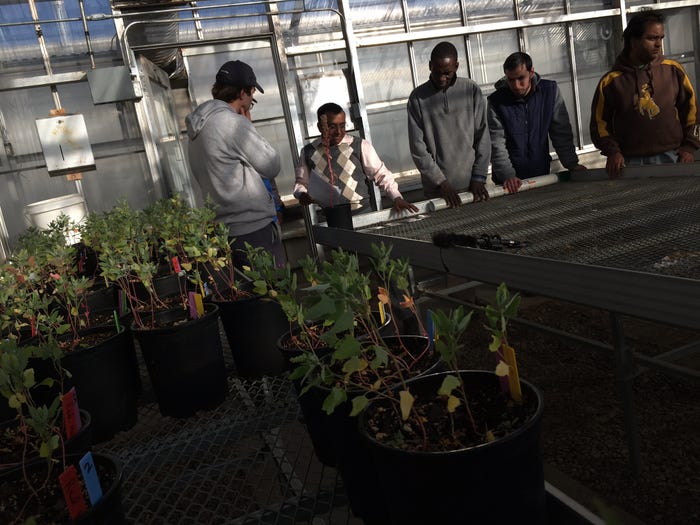
This creates both opportunities and challenges in countries like Peru.
Meanwhile, American farmers are left behind.
There is no reason quinoa can’t be grown in the United States, but there are reasons that nobody has grown it at scale, Islam explains. The professor and his students are attempting to take those reasons out of the argument with simple solutions. Weeds are a problem solved by cheap labor in South America. The professor and his students are working on growing techniques that could abate the problem without herbicides. Another problem is matching the variety and the agricultural process to the location. Wyoming with its cold temperatures and high elevations could be ideal.
“Their conditions and our condition is very similar,” he says of the match between the high Andes landscape and mountainous Wyoming. Quinoa could thrive in areas of the West where other crops prove challenging. “That makes this a unique crop,” Islam tells us. “We can successfully grow and produce quinoa here in this environment.”
Islam shows us a greenhouse where, for the first time, I see quinoa that’s coming from the ground and not a box or a bulk bin. Grow it in the United States, at scale, at a lower price than imports and the enormous health benefits could be more widely shared in new products. Small farmers could trade corn for quinoa and put the multiplier effect into action.
One of his students is researching the potential for farmers to grow fenugreek, an herb that offers outstanding health benefits and another potentially lucrative niche crop for American farmers.
Again there are challenges, but Islam’s student is chipping away at them, fitting the best practice to best varieties and the best results.
India is the biggest producer of fenugreek. India is also second only to China as a least-trusted country of origin in NBJ consumer research. Quality fenugreek is in demand. Distributors are importing better grades into India. Islam heard from a Canadian company that wanted the fenugreek his students are growing. He laughs about it now. He runs a lab, not a farm.
“They wanted 4,000 pounds a month,” he says, smiling.
It’s late in the afternoon when we pull away from the lab and greenhouses. We drive west through a collection of hills and valleys, a lower-elevation break in the Continental Divide that allowed the first transcontinental railroad through. The sun drops low and then disappears. Tomorrow will be our longest day on the road, but this day feels long enough when we find a Best Western in Evanston, Wyoming.
We are 425 miles and two highways into our journey, but we’ve already learned more about where we are going than anything we could have seen on the map.
This series was underwritten by:
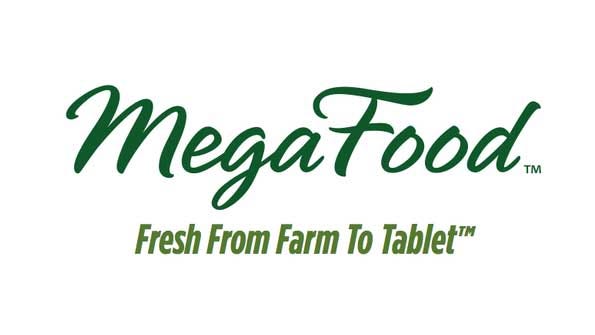
About the Author(s)
You May Also Like

